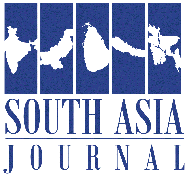
False flag operations as a means of strategic manipulation have long been a clandestine feature of inter-state rivalry, but in a nuclearized, security-concerned region like South Asia, the stakes are extremely high. In the wake of Operation Bunyan-un-Marsoos, India’s employing narrative warfare by weaponizing narrative timing along with its strategy of covert operations, purportedly assisted by its steadily increasing alignment with Afghan-based networks, poses not just tactical instability, but also structural threat to regional strategic stability. Two most recent development illustrate this pattern where narrative warfare along with covert operations are being employed by using the narrative timing to fulfil the strategic gains.
At the core of this growing anxiety is a controversial op-ed by former TTP spokesperson Ehsan Ullah Ehsan in The Sunday Guardian, an Indian newspaper with close connections to security and intelligence circles. His assertions that Pakistan is plotting new terrorist strikes on Indian soil come at a strange time, coinciding with India’s desire to divert strategic blame amid recent regional operations. More importantly, it signals a fundamental shift in India’s approach to conflict resolution – not by conventional force, but through information domination, psychological projection, and perhaps outsourced hybrid threats.
Second, as this story gained popularity in the media, the Baloch Liberation Army (BLA) issued a video claiming credit for the kidnapping of passengers aboard the Jaffar Express. This was not a random terrorist act; it was a highly symbolic psychological operation intended to incite indignation and fear within Pakistan while conveying a picture of disintegration to worldwide audiences. These two apparently unconnected, philosophically diverse, and geographically distant events happened within days of one other. However, when considered through the lens of modern hybrid warfare, this is not a coincidence. It shows a larger pattern of convergent proxy narratives, which are likely orchestrated or exploited by external players with a common purpose in weakening Pakistan’s regional stature. The timing primarily advantages one state actor: India.
From the perspective of realist security studies, notably Stephen Walt’s “balance of threat” theory, India’s growing strategic presence in Afghanistan- whether through intelligence linkages, media influence, or remnants of its pre-2021 strategic assets, even under Taliban leadership, indicates more than just force projection; it modifies Pakistan’s and China’s threat perceptions. The India-Afghanistan relationship compounds Islamabad’s long-standing concerns of a dual security threat. For Beijing, which envisions CPEC as an essential corridor and Afghanistan as a possible BRI extension, any Indian infiltration along its western border raises concerns about containment.
The alleged use of figures such as Ehsan, who strangely escaped detention and continues to speak freely despite being a designated terrorist, and separatist groups such as the BLA, known for receiving support and safe havens during India’s previous engagement in Afghanistan, exemplifies what scholars call proxy convergence. These players, although not necessarily united, become valuable assets in an adversary’s narrative war.
The weaponization of non-state actors and narrative proxies constitutes a typical example of Gray Zone conflict, in which states use the uncertainty between peace and war to achieve political goals without violating traditional red lines. Indian intelligence agencies appear to be playing within the blurred space of sub-threshold escalation by exploiting figures like Ehsan, long known to be a hybrid actor with suspected ties on both sides which, as Forrest Morgan (RAND Corporation) warns, can be “difficult to deter but easy to miscalculate.”
Furthermore, according to constructivist IR theory, the conflict is no longer about territory or power, but about meaning and legitimacy. The Indian narrative portrays Pakistan as a perennial aggressor while presenting itself as an unfortunate victim of cross-border terrorism. By outsourced such messages to tainted voices in controlled media ecosystems, the region’s strategic discourse is being rewritten one op-ed, leak, and headline at a time.
However, this deadly combination of narrative engineering and strategic alliances has the potential to drive South Asia over the edge. As Robert Jervis emphasized in his theory of “perception and misperception in international politics,” governments frequently behave based on how they perceive intentions, rather than objective fact. India’s apparent pre-conditioning of the international audience through media proxies and militant voices, risks creating a false justification for escalatory moves under the garb of self-defense. In a region filled with historical distrust and asymmetric communication, such approaches not only incite conflict, but also exacerbate it.
China’s subdued disquiet is telling. Beijing, which has strong interests in Pakistan’s western front and the larger Central Asian theatre, views instability as a direct danger to its strategic and economic corridors. India’s potential use of Afghan territory for covert operations weakens what China sees as a critical buffer of regional stability, a prerequisite for its global aspirations via BRI.
In practice, the world is witnessing a narrative-first approach that bypasses traditional escalation ladders while achieving strategic goals such as deterrence disintegration alliance division, and mistaken retaliation postures. In a nuclear trio encompassing India, Pakistan, and China, such hybrid and ambiguous provocations have the potential to not only ignite crises, but also destabilize deterrence reasoning itself. It is an opportunity for the region and those watching to acknowledge this for what it is: a festering informational conflict that, if not addressed, might erupt into a real-world fight. The credibility of entities such as the SCO, as well as the viability of regional counterterrorism cooperation, are dependent on reassessing the role of influence operations in inter-state interactions.
India must consider if the short-term psychological gains from narrative warfare are worth the long-term risks of strategic instability. The simultaneous introduction of anti-Pakistan propaganda from ideologically opposed entities, one violent, the other separatist, is not coincidental noise. It implies an underlying coordination, or at the very least, a planned use of proxies. In South Asia, where distrust is pervasive and nuclear deterrence is fragile, the distinction between perception and provocation is razor thin. Regional peace cannot be sustained by narrative manipulation and disinformation efforts. It demands a renewed commitment to moderation, conversation, and a shared awareness that information warfare, like conventional combat, has far-reaching implications beyond the battlefield.
